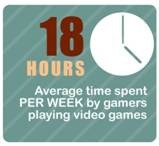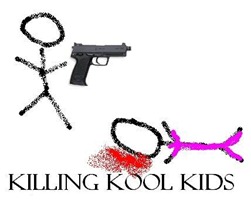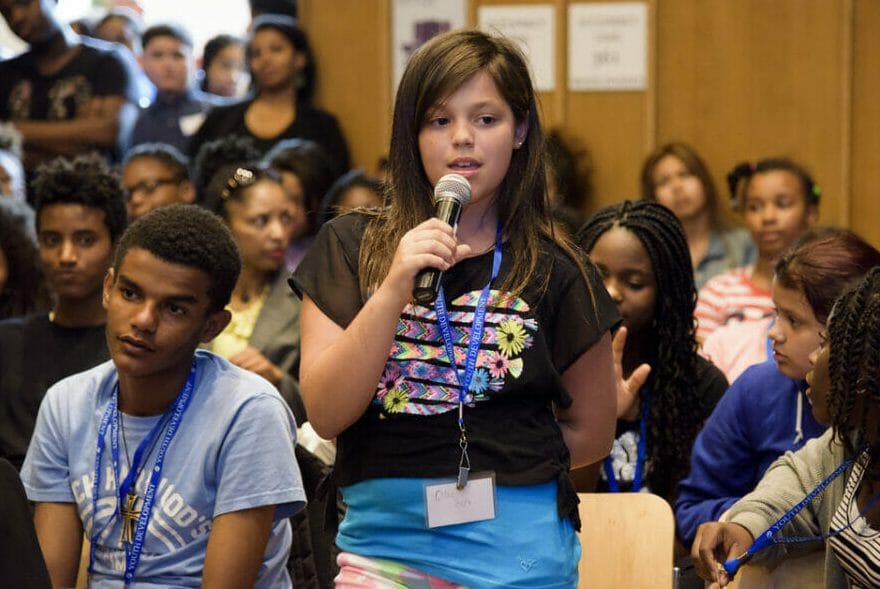
This year, Tsoof had to do a school assignments in drama class. If you think Drama studies are all about playing, make belief or acting, they are not. He had to research a topic and present it in a special style and he worked really hard on this project. Gal and I felt happy and privileged to watch the whole process of this assignment and the way he grew from doing it.
We were shocked by how easy it was to find information on video games and violence. It is all there – all the proof for the negative and devastating effects of violent video games on our society. Yet, the spread of violent video games is increasing and things are getting worse.
While Tsoof was doing his assignment, he had to describe different perspectives of the video games issue. He covered the money perspective, the health perspective, the psychological effects, the artistic perspective (yes, I know it is hard to comprehend, but some people see themselves as video game violence artists) and the parents’ perspective.
During the whole time he was working on it, I was looking for someone to blame. It was obvious there is a problem, especially among teens, and I was looking for someone to blame for it. I cannot explain why I was looking for someone to blame. I had the illusion that pointing a finger could ease some of this violence and heartache, but it was just an illusion.
I was not sure how to present Tsoof’s findings to you. I was debating whether to tell you my opinion or maybe there was no need. I think maybe just giving you some of the facts about it will be enough for you to understand the severity of the problem. As I believe that as parents, we have lots of power to change this horrible phenomenon. So sit back and be horrified!
Facts about video games and violence
These have been collected from various sites and there are slight variances in the numbers, but you get a scary picture regardless.

- 75% of gamers are 18 years of age or older – it is not a kid sport!
- 26% of the video game players are over 50
- The average game player is 34 and has been playing for 12 years
- The average player plays 18 hours a week. Imagine how expert they could be at something productive instead if they dedicated 18 hours a week to it.
- In a survey done between children aged 12 to 17, it was found that 97% of them had played video games and 50% of them had played the previous day.
- 50% of the boys and 15% of the girls in the survey had played video games rated M (Mature) and AO (Adults only).
- 80% of the minors who attempt to buy Mature-rated products are successful.
- 55% percent of gamers play games on their phones or handheld device.
- A study conducted at the University of Central Florida in 1998 found that of the 33 games sampled, 41% did not feature female characters, 28% portrayed women as sex objects, 21% depicted violence against women and 30% did not represent the female population at all.
- The most popular video games, and the ones making the video game manufacturers the most money, contain violent acts.
- In 2008, 6 of the top 10 best-selling video games included violence, with 4 of the games carrying a “Mature” rating recommended for persons aged 17 and older.
- The gaming industry sold $60.4 billion in 2009. It is estimated to reach $70 billion by 2015.
- According to the American Academy of Pediatrics, of the 33 most popular video games chosen by children in grades 4 through 8, 21% featured violence against women.
- In a study done by Dr. Vincent Mathews, professor of radiology at Indiana University School of Medicine, it was proven that adolescents’ brain functions are actually altered as a result of playing violent video games. After playing a violent video game for just 30 minutes, the adolescents experienced increased activity in the part of the brain involved with emotional arousal, the Amygdala.
- The research also discovered that there is a decrease of activity in the parts of the brain associated with self-control. In other words, after only 30 minutes of playing a violent video game, it is hard for teens to control themselves.
- Research on children’s health and wellbeing discovered that exposure to violent forms of media increases kid’s nightmares.
- The American Academy of Pediatrics believe that violent forms of media contribute to aggressive behavior, desensitization to violence, nightmares and fears of being harmed by others.
- Studies discovered that children who play violent video games are less social and less helpful than those who do not play violent video games.
- Studies found that children who play violent video games show an increase in aggressive thoughts and violent retaliation to provocation, meaning that when they think they are provoked, they will have aggressive and violent thoughts of revenge.
- A 2009 survey by the Centre for Addiction and Mental Health (CAMH) in Toronto, Canada, of 9,000 students from Grades 7 to 12, showed almost 10% get 7 (or more) hours of “screen time” a day. A little over 10% also reported having video gaming problems in the previous year.

- Boys who play Teen or Mature-rated games for 40 minutes a day or more may witness over 180 incidents of aggression per day, or 5,400 aggressive incidents per month!
- A 2008 study on the video game Grand Theft Childhood reported that 60% of middle school boys who played at least one Mature-rated game hit or beat someone up, compared to 39% of boys who did not play Mature-rated games.
- In 98% of the games surveyed, aggression went unpunished. In fact, in more than half the video games, the perpetrators were rewarded for their aggressive actions.
- Between 13% and 22% increase of teen violence is connected to violent video games.
- Earning points for killing or hurting someone makes the act allowed and rewarding in players’ mind. While killing or hurting someone in the real world is unacceptable, kids gain confidence and popularity the more they kill and hurt others in the game. Studies suggest that after playing games in which violence is rewarded, there is an increase in aggressive behavior compared to playing video games in which violence is punished.
- A study done at the University of California randomly divided 100 male students aged 18 to 21 into 2 groups. One group played a low-violence video game – The Simpsons: Hit and Run – and the other played a high-violence game – Grand Theft Auto 3. During the game, their blood pressure was measured and at the end of the game, they had to fill in a questionnaire about their attitude towards violent acts, consumptions of alcohol, marijuana use and unprotected sex. Men who played Grand Theft Auto had greater increases in blood pressure, more negative moods, more uncooperative behavior, more conflict in their social interaction with others and more permissive attitudes toward using alcohol and marijuana compared to those who played The Simpsons.
- In many of the video games, the players have multiple lives. A study in 2005 discovered that exposure to violent games makes players care less when a real violent act takes place.
- Violent video games cause players to associate pleasure and happiness with the ability to cause pain to others.
- Young children are more likely to confuse fantasy violence with real world violence and have a higher risk of mimicking video game actions in real life.
- Violent video games require active participation, repetition and identification with the violent character. With new game consoles allowing more physical interaction, the immersive and interactive characteristics of video games increase the likelihood of the participants identifying with the character doing acts of violence.
- When youth view violence in video games, they are more likely to fear becoming a victim of acts of violence. According to a 2000 joint statement by six leading national medical associations, including the American Medical Association and the American Psychological Association, this fear results in youth not trusting others and taking violent self-protective measures.
- Violent video games teach kids that aggression is a legitimate way to reach your goals.
- Violent video games teach kids that aggression is a legitimate way to solve conflicts.

- The basic prototype for aggression in Mature-rated video games involves human perpetrators who engage in repeated acts of “justified” violence involving weapons.
- 78% of violent interactions in the first 10 minutes of game play featured lethal violence.
- In almost a quarter of the violent interaction in mature games, players perceived themselves as stalkers.
- 78% of the violent action is shown up close.
- Almost half of violent video game segments featured humor.
- Only 10 percent of video game perpetrators possessed “good” or “pro-social” qualities.
- More than 70 percent of American teenage boys have played the violent and adult-rated Grand Theft Auto video game, and those teens are more likely to have been in a fight than those who have not played.
- Psychologists warn that violent video games may be more harmful than violent television or films, because they are interactive and require the player to identify with the aggressive character.
- Playing video games is categorized as an addiction. There is even a term for it – “Internet addiction disorder” (IAD).
- It is estimated that after prolonged exposure to violent video games, children and grownups cannot tell the difference between the virtual world and reality.
If you think this is bad, join me next week for the second chapter of the video games and violence for some interesting news from around the world about people who bring the virtual world of video games into real life.
Happy parenting,
Ronit
This post is part of the series Video Game Violence:
- Video Games Violence (1): Shock and Awe
- Video Games Violence (2): Video-game-inspired real violence














